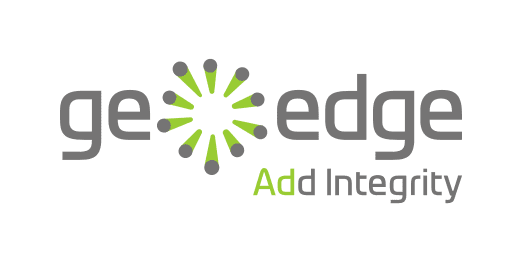Why Monitoring Latency Is Key to Improving Publisher Revenue
Latency directly impacts a publisher’s ad revenue and their ability to be competitive in the marketplace. That’s “competitive” by placing as high as possible in search results and by fetching the highest CPMs possible.
User experience hiccups try the user’s patience- They click away from the page and look for similar content from another publisher. The user loses a few seconds of their life, while the publisher loses the opportunity to monetize their session and any future visits the same user may have made to their site.
Ad latency is one key factor in monetization that remains beyond publishers total control until now. Managing ad latency begins by monitoring it. But first, let’s detail how latency impacts publisher revenue. There are three levels where revenue is directly affected.
Know What Metrics to Monitor First
1) Number of impressions
Keep in mind that loading speed and interruption of the experience during load are among the top motivators for users when installing ad blockers. So latency not only causes publishers to fail to monetize a meaningful share of impressions, it increases the share of audience it can monetize at all.
2) Viewability.
The aforementioned Google study also observed viewability rates decreased by 2.9% on desktop and 3.6% on mobile with the addition of one second of latency. And viewability rates are directly tied to publisher CPMs – which means latency can devalue all of a publisher’s inventory, not just individual pages and user sessions. In short, advertisers want to buy on viewability. They don’t want to pay for wasted impressions, and the Media Rating Council’s standards dictate they need to pay when 50% of a display ad is in view for at least one second, or 50% of a video ad for two seconds. Advertisers are willing to pay more for a greater share of viewable impressions.
For publishers creating high-quality content and attracting reliable traffic from audiences advertisers otherwise value highly, there is a grim irony in failing to earn the revenue they deserve because too much of their inventory fails to meet industry viewability standards. Reducing latency improves viewability rates and raises the amount of money advertisers are willing to spend on their inventory.
3) Core Web Vitals.
Specifically, when measuring loading, interactivity, and visual stability, Google sets certain standards for each. Largest Contentful Paint gauges loading time and is marked as “needs improvement” after 2.5 seconds of latency. First Input Delay measures the time it takes for the page to become interactive for the user, and is marked “needs improvement” at 100 milliseconds of latency. Cumulative Layout Shift gauges the visual stability of the entire page, and is marked “needs improvement” after 0.1 seconds of latency. Clearly, the milliseconds add up and sink a publisher’s search ranking very fast. Google allows publishers to measure how the ads on their pages impact their CWVs using its Lighthouse tool.
Improving on all three of these factors lead to greater revenue for a publisher. Monitoring and managing latency is essential to improving user experience and the publisher’s own KPIs.
Latency Ingrained in the Bidding Process
Publishers’ ad latency problems go well beyond heavy or otherwise off-spec ads. Latency is a common consequence of the complicated ad supply chain and bidding processes. There are many steps involved in serving an ad.
Here’s how it can look for many leading publishers: The bid request goes to the header and server-side auction. Those demand partners bid. The winning bid goes to the unified auction in Google Ad Manager, where it competes based on price and priority with direct-sold, direct guaranteed, non-guaranteed bids, and bids from AdX. After those skip steps, the winning bid calls the ad server and delivers the ad to the page.
Of course, publishers already understand how complex the bidding and ad serving process has become with header/server-side bidding on top of the traditional waterfall, and with all the integrations DSPs and trading desks need to implement to bid on the inventory they want.
But publishers must not be resigned to ad latency. They need to take action to minimize it, to keep their audiences on the page and monetizing their content.
While vulnerable to factors beyond their control that impact user experience, the audience is also the most powerful piece of the digital media ecosystem. The audience has the power to make or break a publisher’s brand – to become loyal users and advocates for the publisher’s content, or to spread distrust in a publisher’s brand and discourage others from engaging with its pages and apps. Publishers are ultimately responsible for the user experience they provide, which means they have a responsibility to manage latency.
How to Take Action Against Latency Now
It’s challenging for publishers to monitor latency from all ads served to their properties from all demand sources. That’s why GeoEdge, as part of our team’s efforts to ensure high ad quality standards and help publishers optimize UX and monetization, measures ads’ response time from the moment the creative tag is placed on the page, to the point when the ad is rendered. GeoEdge publisher partners then have a dashboard view of the median value of each of their demand partners’ latency rates so that latency can be efficiently compared across all demand partners.
Publishers are advised to track demand partners’ latency rates over time because those rates can vary over any given day. Publishers should take further action for any partner delivering what the publisher would consider a significant percentage of slow-responding ads. The publisher should then run an A/B test without that partner in the mix, to see if latency statistics improve.
Here are some additional measures publishers can take to reduce ad latency proactively:
- Lazy loading on below-the-fold ads. This means the page is not over-exerting ad load resources before the above-the-fold page and ad content load, or wasting resources on ads that are otherwise not yet viewable.
- Set placeholders for ads above the main content. This improves visual stability, which will be reflected positively in your CWVs.
- Optimize header and server-side bidding timeouts. The auction itself, as we’ve detailed earlier, is a source of latency. Setting timeouts allows publishers to deprioritize slow-bidding partners in the header without losing impressions.
Ad latency is a universal, evergreen issue for publishers of all sizes. But don’t think of it as a force of nature. It’s within a publisher’s control, and limiting latency is a competitive differentiator. Publishers who properly manage latency monetize a greater share of viewable impressions and are easier for audiences to find via search. It’s a task that requires communication and collaboration with a publisher’s partners to address latency sources in the bidding and ad serving process.
Speak with GeoEdge today to learn about how you can use our tools to monitor latency, and how we can help you have those critical conversations with the ad partners you rely on.











